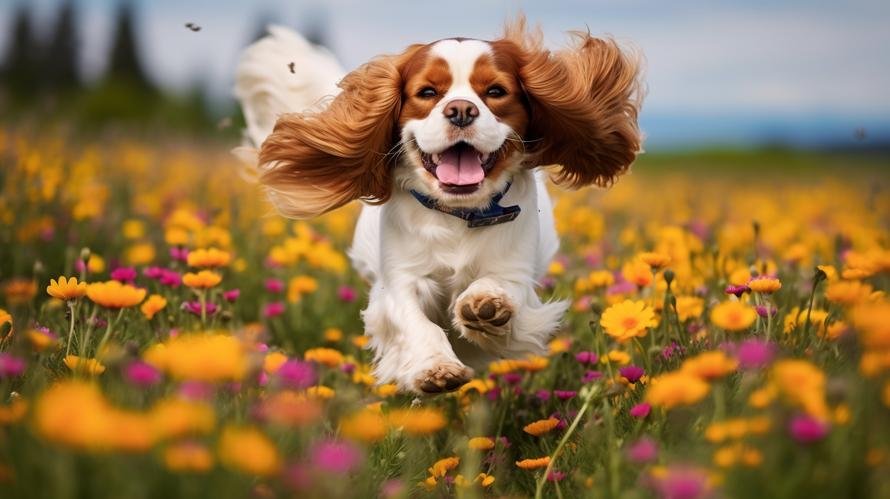Imagine, if you will, a dog whose ancestors once roamed the opulent halls of Britain’s royal courts, hobnobbing with none other than King Charles II himself. That dog is none other than the Cavalier King Charles Spaniel, a breed as regal in appearance as it is in name.
But here’s something you most certainly haven’t heard before: legend has it that King Charles II was so enamored with this breed that he passed a statute allowing them to visit any public place – even the Houses of Parliament where dogs were typically forbidden. The King’s love for this breed ran so deep that his courtiers complained he paid more attention to his dogs than to matters of state!
Today, this royal favorite is a charming and affectionate breed that is increasingly popular among dog lovers. Whether you are attracted by their silky, wavy coat or their big, expressive eyes, there is no denying the appeal of these dogs. But, before you bring a Cavalier King Charles Spaniel into your home, there’s one important question you need to answer: Does a Cavalier King Charles Spaniel shed a lot?
Despite its smooth coat, the Cavalier King Charles Spaniel is indeed quite the shedder. While they may not shed as much as some double-coated breeds, they lose hair consistently throughout the year, with peak shedding seasons in the spring and fall. One unique trait about this breed’s shedding is that they often lose hair in large patches rather than individual strands, which can sometimes feel like a lot.
Now that the shedding question is out of the way, let’s move onto some tips and advice to effectively manage it.
1. Regular Grooming: Regular grooming can significantly reduce shedding. Brush your Spaniel at least thrice a week using a slicker brush to effectively remove any loose hairs before they end up on your carpet or couch. Don’t forget to check their ears as well — their long, droopy ears are prone to infections, so regular checking and cleaning are essential.
2. Balanced Diet: Believe it or not, a healthy diet can also affect the amount your dog sheds. Poor nutrition often leads to extra hair loss. So, make sure your dog receives balanced and nutritious meals, possibly supplemented with Omega-3 and Omega-6 fatty acids, which can help promote a shiny, healthy coat.
3. Regular Vet Checkups: Remember, excessive shedding can sometimes indicate underlying health problems. Regular vet check-ups will ensure any health issues that might increase shedding are detected early.
4. Invest in Quality Cleaning Tools: From good vacuum cleaners designed to pick up pet hair to lint rollers, having the right cleaning tools at hand can make managing your dog’s shedding less stressful.
While these tips and tricks will help manage shedding, it’s important to remember that it’s not about eliminating shedding altogether. Shedding is a normal part of a dog’s life and is a sign of a healthy coat that is going through its natural process.
So, there you have it – our royal friend, the Cavalier King Charles Spaniel, is indeed quite the shedder. But remember, with judicious grooming, a balanced diet, regular check-ups, and the right tools, shedding can be kept under control. More importantly, the love, companionship, and endless charm that these dogs bring far outweigh the nuisance of dealing with a little dog hair now and then!
Without a doubt, the Cavalier King Charles Spaniel is a breed that carries a royal legacy with grace and charm. And although they may shed their coats more than we’d ideally like, the joy they bring to a home is simply immeasurable. King Charles II certainly thought so, and once you welcome these adorable regal companions into your home, chances are, you will too!



